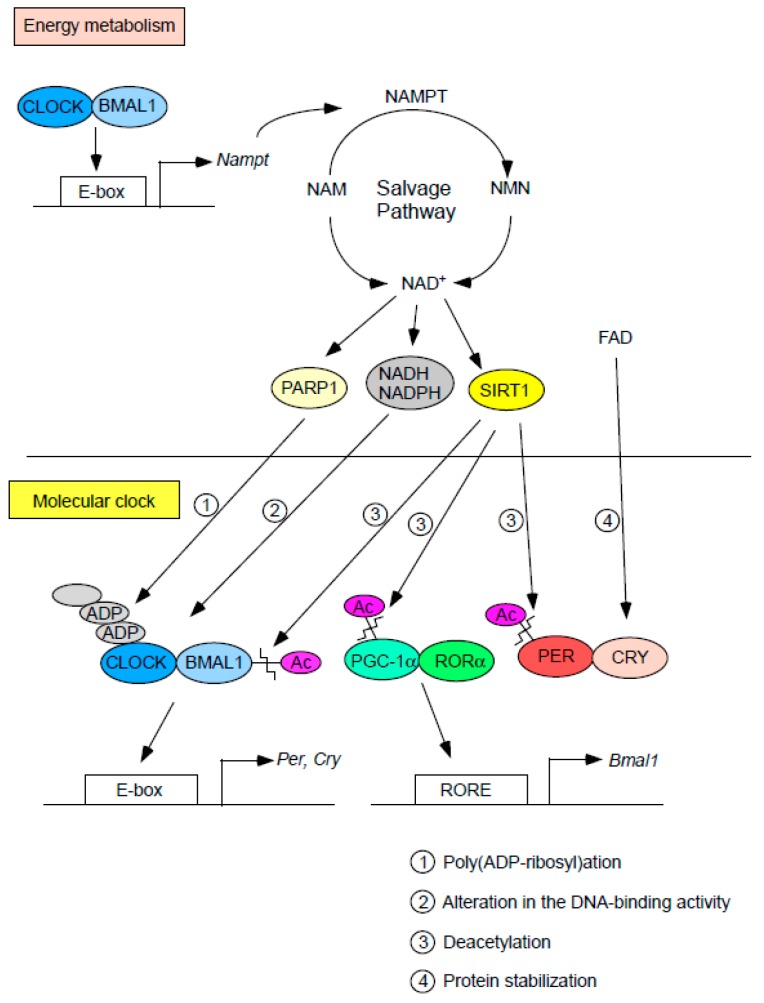Figure 2.
Interplay between cellular redox factors and the molecular clock. Cellular redox status directly and indirectly affects the function of the molecular clock through changes in the levels of cofactors (i.e., NADH, NADPH, and FAD) and/or the activity of NAD+-consuming enzymes (SIRT1 and PARP1). The molecular clock in turn regulates the transcription of the Nampt gene, which encodes the rate-limiting enzyme in the NAD+ salvage pathway.

